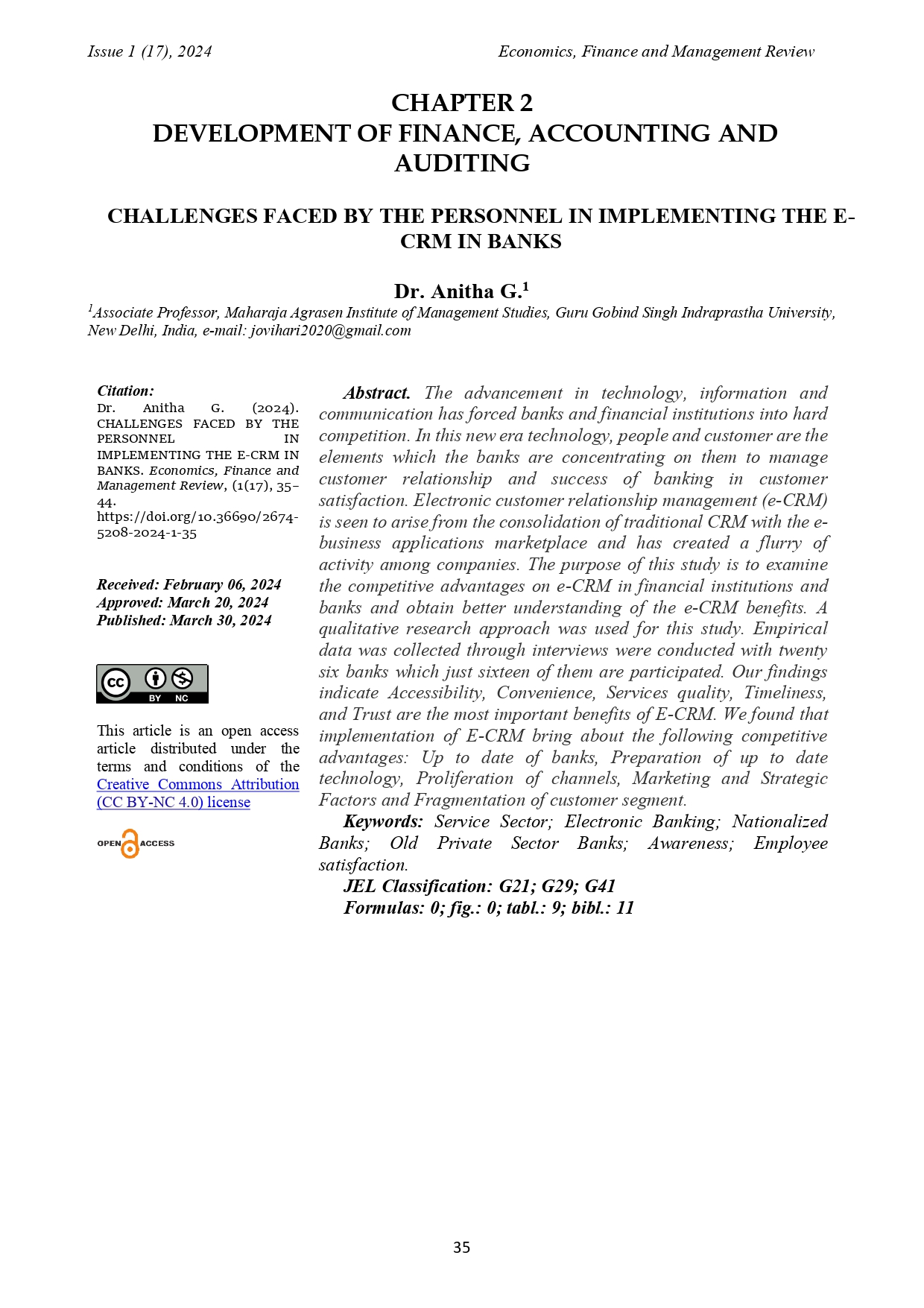CHALLENGES FACED BY THE PERSONNEL IN IMPLEMENTING THE E-CRM IN BANKS
DOI:
https://doi.org/10.36690/2674-5208-2024-1-35Keywords:
Service Sector, Electronic Banking, Nationalized Banks, Old Private Sector Banks, Awareness, Employee satisfactionAbstract
The advancement in technology, information and communication has forced banks and financial institutions into hard competition. In this new era technology, people and customer are the elements which the banks are concentrating on them to manage customer relationship and success of banking in customer satisfaction. Electronic customer relationship management (e-CRM) is seen to arise from the consolidation of traditional CRM with the e-business applications marketplace and has created a flurry of activity among companies. The purpose of this study is to examine the competitive advantages on e-CRM in financial institutions and banks and obtain better understanding of the e-CRM benefits. A qualitative research approach was used for this study. Empirical data was collected through interviews were conducted with twenty six banks which just sixteen of them are participated. Our findings indicate Accessibility, Convenience, Services quality, Timeliness, and Trust are the most important benefits of E-CRM. We found that implementation of E-CRM bring about the following competitive advantages: Up to date of banks, Preparation of up to date technology, Proliferation of channels, Marketing and Strategic Factors and Fragmentation of customer segment.
Downloads
References
Fjermestad, J. & Romano Jr, N. C. (2003). Electronic customer relationship management: revisiting the general principles of usability and resistance: an integrative implementation framework. Business Process Management Journal, 9(5), 572-591. http://dx.doi.org/10.1108/14637150310496695.
Churchill, L. (2010). Marketing Research Methodological Foundation.
Rozita Shahbaz , Keshvari, The Impact of E-CRM on Customers Attitude and Its Association with Generating Competitive Advantages in Iranian Financial B2B Context. International Business Research , volume 5 , issue 4 , p. 1913 - 9012 Posted: 2012-04.
Kennedy, A. (2006). Electronic customers relationship management (eCRM): Opportunities and challanges in a digital world. Irish Marketing Review, 18(1&2), 58-69.
Xu, Y., Yen, D. C., Lin, B., & Chou, D. C. (2002). Adopting customer relationship management. Industrial Management & Data System, 102(8), 442-452. http://dx.doi.org/10.1108/02635570210445871
Yin, R. K. (1984). Case study Resaerch-Design and Methods.
Yu-Lin, H. Y. a. (2005). Financial service personalization. Industrial management and data systems, 105. Zeithaml, V., & Bitner, M. J. (2000). Service Marketing.
Zikmund, G. W. (1994). Exploring Marketing Resaerch.
Zikmund, G. W. (2000). Business research methods. Oklahoma state university the Drydenpress, Harcourt college publishers.
Zineldin, M. (1995). International Journal of Bank Marketing, 13.
Zineldin, M. (1996). Bank strategic positioning and some determinants of bank selection. International Journal of Bank Marketing, 14(6), 12-22. http://dx.doi.org/10.1108/02652329610130136

Downloads
Published
How to Cite
Issue
Section
License

This work is licensed under a Creative Commons Attribution-NonCommercial 4.0 International License.








